Whether you are an enthusiast, beginner or a professional photographer, we invite you to join us on a truly amazing photographic adventure tour of a lifetime. This a spectacular vacation with a wonderful creative learning experience in a geographically diverse land. Being a land locked country; Nepal offers many more natural scenarios, species and wildlife, indigenous tribes, multi culture and tradition which cannot be found in any other parts of the World. Most importantly, it provides you with the opportunity to photograph the tallest mountain in the World i.e. Mount Everest (8848 m) along with other seven tallest mountain namely; Mount Kanchenjunga (8586 m), Mount Lhotse (8516 m), Mount Makalu (8481 m), Mount Cho Oyu (8201 m), Mount Dhaulagiri I (8167 m), Mount Manaslu (8156 m) Mount Annapurna I (8091 m).
Nepal is undoubtedly a photographer’s delight, a land of eternal fascination. Among several countries in the world, Nepal is also one of the must visit country in your lifetime. An ancient Hindu manuscript describes Kathmandu, Nepal as the “Land of Gods surrounded by beautiful mountains”. Among the top highest mountains, eight tallest mountains are located in Nepal. There are more than thousands temple inside the capital city only and each of the temple has its legend and own religious belief. Most above Nepal is a true paradise for Photographers. It has become one of the dream destination where being in one country, photographer can experience and click pictures of diverse natural beauty and landscapes, countless historic monuments, temples, Stupas, beautiful villages, Mountain views, hill station, wild life and many more. Our casual format provides a unique blend of hands-on learning
Photography tour organized by Nature Trail Travel & Tours, Trekking & Expedition offers you a combined tour package which includes a day tour in the historical sites rich in archaeological and religious perspective, ancient bazaars and medieval palace squares, explore ancient Newari villages which are living museums and shrines of the local deities, hiking around the beautiful villages, and visit to the National parks of country for wild life photography and trekking along the most forbidden area of Nepal. Though this is a combined tour package but this tour is entitled all about taking photos. This tour takes you to some of the inherent destinations of scintillating eco-cultural heritages. Starting from the complex cultural practices of Kathmandu valley this tour extends to magical landscapes and wild lives of Pokhara and Chitwan and finally to picturesque mountain sceneries from Muktinath. We will get to marvel and photograph surreal places such as: Daman, Chitwan, etc. The sunrise view in Daman photographed during the first rays of the early morning light and fog creates nothing short of breathtaking photography.
You will be accompanied by our English speaking tour/trekking guide and professional photographers who will teach you and if you are an expert yourself, then they will be eager to learn some new ideas from you as well. They will guide you with the best landscape from where you can have the picturesque shots. If you are a beginner then our Professional Photographer will help you understand the basics requirements of photography like: composition, light, exposure, and depth of field, shutter speed and many more.
01Arrival at Tribhuvan International Airport. Upon arrival, meet and transfer to hotel
02Photography tour inside Kathmandu valley including: Kathmandu City, Swayambhunath and Patan
03Photography tour inside Kathmandu valley including: Pashupatinath, Boudhanath and Bhaktapur Durbar Square
04Drive Kathmandu to Daman via Kulekhani Dam site – 4/5 hrs drive
05Drive Daman to Chitwan – approx. 3 / 4 hrs drive
06Full day wild life activities in Chitwan
07Drive Chitwan to Pokhara – approx. 4/5 hrs drive
08Early morning visit to Sarangkot. Rest day sightseeing & photography tours in Pokhara city
09Drive to Phedi and trek to Dhampus village (1650 m)
10Trek Dhampus to Sarangkot and drive to Pokhara
11Fly Pokhara to Jomsom and trek to Marpha – approx. 3 hrs. walk
12Trek Marpha to Kagbeni (2750 m) – approx. 6 hrs. walk
13Trek Kagbeni to Muktinath – approx. 4 hrs. walk
14Trek Muktinath to Jomsom – approx. 5 hrs. walk
15Drive Jomsom to Pokhara
16Fly / Drive Pokhara to Kathmandu
17Leisure or optional sightseeing tour
18Departure
Arrival at Tribhuvan International Airport. Upon arrival, meet and transfer to hotel
Photography tour inside Kathmandu valley including: Kathmandu City, Swayambhunath and Patan
Photography tour inside Kathmandu valley including: Pashupatinath, Boudhanath and Bhaktapur Durbar Square
Drive Kathmandu to Daman via Kulekhani Dam site – 4/5 hrs drive
Drive Daman to Chitwan – approx. 3 / 4 hrs drive
Full day wild life activities in Chitwan
Drive Chitwan to Pokhara – approx. 4/5 hrs drive
Drive to Phedi and trek to Dhampus village (1650 m)
Trek Dhampus to Sarangkot and drive to Pokhara
Fly Pokhara to Jomsom and trek to Marpha – approx. 3 hrs. walk
Trek Marpha to Kagbeni (2750 m) – approx. 6 hrs. walk
Trek Kagbeni to Muktinath – approx. 4 hrs. walk
Trek Muktinath to Jomsom – approx. 5 hrs. walk
Drive Jomsom to Pokhara
Fly / Drive Pokhara to Kathmandu
Leisure or optional sightseeing tour
Departure
Nepal enjoys unique geographical features that have made it one of the most sought after destinations in Asia. It has been a fiercely independent country which is famous in the World for the highest peak known as Mount Everest. Though being a small country, it has never set its limit to offer its visitors with the natural beauties. Since opening to foreign visitors in the fifties, it has been the epicenter of Himalayan photographic activities. Photographing in Nepal not only offers an opportunity to immerse oneself in Himalayan bliss but also a rare opportunity chance to take a step back in time. This photography tour lets you capture the lifestyle and nature of the historic Nepal and beyond. You will meet the genuinely gracious Nepali people along the way who are always eager to welcome their guest with a hospitable smile on their face. Most Nepalese are as interested in you as you may be in them and they are not bothered if you want to take their photo, as long as you politely ask first.
Come away with an appreciation of a culture that is unmatched anywhere in Asia. The moment you start to think you’re right on the precipice of unraveling one of Nepal’s deep mysteries, she has an uncanny way of reminding you that it would take more than just a few lifetimes to do so. Indeed, demystifying Nepal is a perpetual work-in-progress. And that is precisely what makes the country so deeply addictive. And knowing that, just when it’s least expected, you can find yourself up close and personal with moments that have the power to alter the way you view the world and your place in it. The multitude of sacred sites and time-honored rituals are testament to the country’s long, colorful, and sometimes tumultuous, religious history. And then there are the festivals! Nepal hosts some of the world’s most spectacular devotional celebrations – from formidable city parades celebrating events on the religious calendar, to simple harvest fairs that pay homage to a locally worshipped deity. The festival will give us endless photographic opportunities: devotees taking ritual baths in the Bagmati River, making offerings of bael leaves, fruit, and rice to Shiva, chanting prayers and hymns, lighting of bonfires, incense sticks and cotton-made wicks and oil lamps.
This adventurous tour is designed not only to guide you to the most photogenic locations carefully planned for the best light, but to aid you in mentally visualizing a scene before capturing the decisive moment. Our aim is to raise your awareness and spark your creativity so that you not only go home with images to be proud of, but use your new found skills to improve and expand your photographic technique in general. Apart from the technical aspect of learning your camera settings and capabilities, you will learn how to turn an ordinary image into an extraordinary image by using your own creativity. Our goal is to put you at the right place so you can make great images and have time to review and improve your photographic vision and technique throughout the trip while we take care of the logistics. In addition, you will become knowledgeable on how to survey the landscape, utilize and approach your environment, photograph people indigenous to the region and the cultural considerations and challenges of photographing in a foreign country. Our time together will include individual and group discussions, inspiring ideas and great fun.
Some of the sightseeing spots are described below in details:
Kathmandu Durbar Square is located in the Basantapur, heart of the city. It is an ancient courtyard incredible with spectacular craftsmanship that reflects the local inhabitants of yesteryear. The stone paved streets, pagoda style edifices and the religious monuments inclusive of many different deities are exquisitely displayed as far as the eye can see. When Nepal used to be ruled by the Kings, this was the place where crown ceremony of the city’s kings was held and legitimized. It’s easy to spend hours wandering around the square and watching the world go by from the terraced platforms of the towering Maju Deval; it’s a wonderful way to get a feel for the city. Although most of the square dates from the 17th and 18th centuries (many of the original buildings are much older), a great deal of rebuilding happened after the great earthquake of 1934. The entire square was designated a UNESCO World Heritage Site in 1979. The Durbar Square area is actually made up of three loosely linked squares. To the south is the open Basantapur Square area, a former royal elephant stable that now houses souvenir stalls and off which runs Freak Street. The main Durbar Square area, with its popular watch-the-world-go-by temples, is to the west. Running northeast is a second part of Durbar Square, which contains the entrance to the Hanuman Dhoka and an assortment of temples. From this open area Makhan Tole, at one time the main road in Kathmandu and still the most interesting street to walk down, continues northeast. Construction is being made after the devastating earthquake which took place in 25th April 2015.
Swayambhunath is an ancient religious architecture atop a hill in the Kathmandu Valley, west of Kathmandu city. For the Buddhist Newars in whose mythological history and origin myth as well as day-to-day religious practice, Swayambhunath occupies a central position, it is probably the most sacred among Buddhist pilgrimage sites. The Swayambhunath complex consists of a Stupa, a variety of shrines and temples, some dating back to the Licchavi period. A Tibetan monastery, museum and library are more recent additions. The Stupa has Buddha’s eyes and eyebrows painted on. Between them, the number one (in Devanagari script) is painted in the fashion of a nose. The site has two access points: a long stairway with 365 steps, leading directly to the main platform of the temple, which is from the top of the hill to the east; and a car road around the hill from the south leading to the southwest entrance. The first sight on reaching the top of the stairway is the Vajra. According to Swayambhu Purana, the entire valley was once filled with an enormous lake, out of which grew a lotus. The valley came to be known as Swayambhu, meaning “Self-Created.” The name comes from an eternal self-existent flame (Swayambhu) over which a Stupa was later built. Swayambhunath is also known as the Monkey Temple as there are holy monkeys living in the north-west parts of the temple. They are holy because Manjushree, the bodhisattva of wisdom and learning was raising the hill which the Swayambhunath Temple stands on. He was supposed to leave his hair short but he made it grow long and head lice grew. It is said that the head lice transformed into these monkeys. Manjushree had a vision of the lotus at Swayambhu and traveled there to worship it. Seeing that the valley can be good settlement and to make the site more accessible to human pilgrims, he cut a gorge at Chovar. The water drained out of the lake, leaving the valley in which Kathmandu now lies. The lotus was transformed into a hill and the flower became the Swayambhunath Stupa. The complex of this temple also suffered from April 25th earthquake but is now under construction.
Patan Durbar Square is situated at the center of the city of Lalitpur in Nepal. It is one of the three Durbar Squares in the Kathmandu Valley, all of which are UNESCO World Heritage Sites. One of its attractions is the ancient royal palace where the Malla Kings of Lalitpur resided. The Durbar Square is a marvel of Newa architecture. The Square floor is tiled with red bricks. There are many temples and idols in the area. The main temples are aligned opposite of the western face of the palace. The entrance of the temples faces east, towards the palace. There is also a bell situated in the alignment beside the main temples. The Square also holds old Newari residential houses. There are various other temples and structures in and around Patan Durbar Square built by the Newa People. Patan is one of the oldest known Buddhist cities. It is a center of both Hinduism and Buddhism with 136 bahals or courtyards and 55 major temples. Some names of them are: Krishna Mandir, Bhimsen Temple, Vishwanath temple, Taleju Bhawani temple, etc. It offers a wide array of wooden arts in the form of monumental historic edifices that reflects the architectural influence in the city during ancient and medieval times. The creative wooden carvings depicting the sutras of Lord Kamadeva (God of Human love or desire) are scattered throughout the pagoda style temples in the backstreets.
Pashupatinath Temple
Pashupatinath, dedicated to Shiva the Destroyer, is the holiest Hindu pilgrimage destination in Nepal. It is a must visit temple for all the Hindus in their life. Shiva in the form of Rudra was imagined by the early Aryans and later was worshipped in the form of a Linga, a Phallus, a vertical piece of stone placed in an upward position on a round pedestal. The Indus Valley civilization in Pakistan has shown that the people there worshipped Shiva in the form of a Linga in about the 3rd century BC. Besides south Asia, archaeological excavations in some ancient cities of Europe have revealed that the Linga-worship cult existed there too. Shiva has been worshipped in Nepal from the beginning of the Neolithic civilization in the Kathmandu Valley, with scientific archaeological studies and findings around the temple proving that the god Pashupatinath was worshipped here from about the beginning of the Christian era. From about the 7th century onwards it became the first and foremost temple of Nepal, with kings, aristocrats and the rich offering a great deal of wealth and land in trust to the god, making it one of the richest temples in Nepal. Many temples and statues around the temple were added making it a big complex rather than just a temple. The main God or the Linga of Pashupatinath is carved on a blackish stone, with four faces engraved on four sides of the Linga. Pashupatinath temple is one of the UNESCO enlisted world heritage site located in the bank of holy river Bagmati and has a history of more than 2000 years. Pashupatinath temple also being the temple of Lord Shiva possessed its two-storied golden roof and silver doors and is famous for its superb architecture. The richly-ornamented pagoda houses the sacred Shiva Linga, or phallic symbol. Chronicles indicate the temple’s existence prior to 400 AD. Devotees can be seen taking ritual dips in the holy Bagmati River flowing beside the temple. Only Hindu pilgrims can enter the premises of the temple. This temple stands as a symbol of faith, religion, culture and tradition. It is believed that Pashupatinath temple was built in the fifth century and later renovated by the Malla king of Kathmandu. In this temple thousands of Hindu pilgrims visit every year from all around the world. In Maha Shivaratri which falls in the month of February or March, people swarm to Pashupatinath to celebrate the birth of the Lord Shiva. Maha Shivaratri is one of the great Hindu festivals of the valley attracting thousands of Hindu pilgrims to one of the four most Shiva shrines. In this day you see Sadhu, follower of Shiva, covered with sack clothes, dust and ashes.
Boudhanath Located about 11 km (6.8 mi) from the center and northeastern outskirts of Kathmandu, the Stupa’s massive mandala makes it one of the largest spherical Stupas in Nepal. The Buddhist Stupa of Boudhanath dominates the skyline. The ancient Stupa is one of the largest in the world. As of 1979, Boudhanath is listed in UNESCO World Heritage Site. The Stupa is said to entomb the remains of Kassapa Buddha. According to the myth, it is believed that even if a person who has committed great sins circles around the Stupa even once shall be granted one chance to atone for their sins. The April 2015 Nepal earthquake badly damaged Boudhanath Stupa, severely cracking the spire. As a result, the whole structure above the dome, and the religious relics it contained, had to be removed, which was completed by the end of October 2015. The reconstruction began on 3 November 2015 with the ritual placement of a new central pole or “life tree” for the Stupa at the top of the dome.
Bhaktapur Durbar Square is a cluster of prehistoric temples, shrines, and sculptures: the Golden Gate, 55 Windows Palace, Big Bell, Dog Barking Bell, Taleju Temple, Vatshala Temple, Statue of Bhupatindra Malla etc. which is scattered all over this site. It is a museum of medieval art and architecture with several examples of sculpture, woodcarving and colossal pagoda temples consecrated to different gods and goddesses which is 15 km far from Kathmandu. It is a conglomeration of pagoda and shikhara-style temples grouped around a fifty-five window palace of brick and wood. The square is one of the most charming architectural showpieces of the Valley as it highlights the ancient arts of Nepal. The golden effigies of kings perched on the top of stone monoliths, the guardian deities looking out from their sanctuaries, the wood carvings in every place-struts, lintels, uprights, tympanums, gateways and windows-all seem to form a well-orchestrated symphony. Pottery and weaving are its major traditional industries. On 25 April 2015, major earthquake damaged many buildings in the square. The main temple in Bhaktapur’s square lost its roof, while the Vatsala Devi temple, famous for its sandstone walls and gold-topped pagodas, was demolished by the quake.
Tal Barahi Temple, also known as Lake Temple or Barahi Temple is a two story pagoda temple located in Kaski District in western Nepal. There stands Tal Barahi Temple in the middle of Phewa Lake, as an island. A colorful boat at Barahi Ghat is a means of transport to reach to the temple. The Temple is a small pagoda-style temple devoted to the deity Tal Barahi and is surrounded by the crystal clear waters of Phewa Lake. The roof of the temple is of copper sheets and the Gajur (pinnacle) is made of Pittal (brass with gold coated). A stone idol of Barahi Devi is placed inside the temple. The original structure of the temple is made of stone and has a thatched roof. This temple is flooded by the visitors throughout the year to worship the deity or just to enjoy the beauty of the location as the dramatic location attracts the visitors itself. But there is no authentic historical source to prove this legend. With a view to conserve the temple, the Barahi conservation committee is in existence since 2053 B.S. This committee looks after the day-to day Puja and the conservation of the temple. The temple has guthi land for its conservation and maintenance. The legend has it that many years ago a deity named “Barahi” came here to see the local people. Barahi Devi located on the top of Phew Lake (i.e. Sharan) was filled with debris due to which the lake was converted into a solid land. The Devi gave a gesture to Kulamandan Shah (King of Kaski) that that she had a keen interest to stay in the middle of the lake. Kulamandan Shah being a true devotee of the Devi shifted her temple to this place and hence Tal Barahi was established since then. But there is no authentic historical source to prove this legend. Thus, the Barahi Devi is considered as the protector Deity representing the female force.
Muktinath Temple Muktinath; “Mukti” means “Salvation/Nirvana” and “Nath” means “God”. It is the famous pilgrimage site known as the place of salvation and eternity for both Hindus and Buddhists. It is located in the Trans Himalayan region Mustang 20 kilometer north east of Jomsom at the elevation of 3800 meter above sea level. Muktinath also known as Muktichhetra, has been one such holy site, where thousands of devotees flock for attaining the much sought after moksha. Buddhists of Tibet called this temple as “Chumig Gyatsa” which means “Hundred Waters”. They also called this temple is place of “Dakinis” which means “Goddesses known as Sky Dancer”. For Buddhists this place is one of 24 tantric places. They understand the Murti to be a manifestation of Avalokitesvara.
Hindu believe that Lord Vishnu lives at Muktinath temple in the form of ammonites which means Shilas, they also called it Saligram-Shilas. Many Saligram found here are considered by Hindu as incarnation of lord Vishnu and worship them. According to Hindu Myth lord Vishnu turned into Saligram because of Brinda’s (wife of Jalandhar) Curse. Hindu regards Muktinath as Vishnu whereas Buddhist worships Vishnu as Avalokiteshvara. Muktinath temple is a pagoda-shaped temple which is dedicated to lord Vishnu. It is situated on a high mountain range and is visited during fair weather. In this sacred site thousands of Hindu and Buddhist pilgrims visit and pay homage to Lord Vishnu. Both Hindu and Buddhist pilgrims believed that if they go for pilgrimage to Muktinath, they are relieved from all miseries and sorrows. This is a must visit place for Hindus to attain salvation after the Chardham Yatra. It is also one of the 51 Sakti peetams. The Temple depicts metal statues of lord Vishnu, goddess Laxmi, Saraswoti, Janaki, Garuda, Lava-Kush and Sapta Rishis. The building in 1815 of the Buddhist-Hindu temple of Vishnu and Chenrezig at Muktinath-Chumig Gyatsa was initiated by the Nepali Queen Subarna Prabha who considered Muktinath-Chumig Gyatsa Salagrama.
Attraction of Muktinath
• Kunda: Visitors can see two water ponds in front of Muktinath Temple. People take a holy dip inside this Kunda in the belief that it can wash away negative karma and one’s past negative actions.
• Mukti Dhara: Muktinath temple is surrounded by a wall where 108 waterspouts (Dhara) are placed in a semi-circle way with a gap of hardly a foot between the faucets at a height of seven feet. The 108 faucets is cast in the shape of bulls’ heads, pour fourth-sacred water. As this water flows through the Gandaki River, it is ice cold. So, it requires desire and courage for pilgrims to take a holy bath in each of these spouts with a belief that it cleanses all their sins and brings salvation. During the festival of Janai Purnima, Buddhist’s Yar tang Mala is celebrated here. It is also believed that the deity was originated from Jumla, far western part of Nepal helping this area to be the center of attraction for the tourist.
• Jwala Mai Temple: A short distance below the Muktinath Temple, you can hear the sounds of water issued from rock inside the ancient Tibetan style “Jwala Mai Temple”. This temple is situated south and is more sacred. There are three eternal flames known as “Holy flame from soil”, “Holy flame from rock” and “Holy flame from water” inside this temple fed by small natural gas jest that produce continuously burning flame behind a tattered curtain. At present, you can see two flames continuously burning. Hindu believes that this miracle of fire lighting was offering made by Brahma (the creator of universe) himself. Hindus worship the fire as Jwala Mai (Goddess of Fire). Buddhist believes that Padmasambhav, the great Indian master who inducted Tantric Vajrayana Buddhism in Tibet meditated at this place. Buddhist living will show foot prints which they say are those of the great master. They called it “Dhola Mebar Gompa”. It is often possible to see Tibetan woman with elaborate turquoise embedded headdresses, engaged in devotion at these shrine.
• Mharme Lha Khang Gompa: This is a newly built monastery and is dedicated to Guru Rimpoche (Padmasambhava). His huge clay image is placed center of altar along with bon deities: red Trakpo at right side and blue singe Doma at left side. Singe Doma is lion headed deity, Hindu worships this as “Narasimha” and name of monastery as “Narsingh Gompa”. It is believed that founder of this monastery Syandol Lama came from Tibet. Originally this monastery was a big hostel for monks that later collapsed and people of Khinga and Jharkot jointly reconstructed it. The main deities’ monasteries are Sakyamuni, Chingresig and Guru Rimpoche. The monastery is situated at left from entrance gate of Muktinath temple. Mharme Lha Khang translates as thousands of holy lamps.
• Shaligram: Another attraction for the pilgrimage is the River kali Gandaki from where one can collect fossils of the Jurassic park age. One may find a fossil within a few minutes or it may take hours and without success. However, these fossils can be had from the local people at a price. Shaligram, a black stone fossil if found, is considered sacred and is kept in pooja (prayer) room in the house. It is supposed to be symbol of Lord Vishnu.
• Swaminarayan: One Hindu Guru connected to Muktinath is Lord Shri Swaminarayan, Satguru of Sabij Yoga, the goal of which is the realization of and service to God Supreme. At the end of the 18th century this Satguru practiced severe penance in Muktinath for two and a half months and attained the highest degree of proficiency in Nishkamvrat. In 2003 his followers funded the new wall around Muktinath and raised a small monument for him at Muktinath. You can also visit this monument.
• Kagbeni: Other attraction of this pilgrimage tour are the holy site of Kagbeni, where you can have an excellent panoramic view of the mountains like Annapurna Range, Mt. Machapuchare, Nilgiri Himal, Dhaulagiri Range, etc. You can also closely observe the culture of the Himalayan people, Himalayan landscapes, river valleys, world deepest gorge of Kali Gandaki between Annapurna and Dhaulagiri etc. Kagbeni is famous for the Saligram, a stone on which image of lord Vishnu is inscribed.

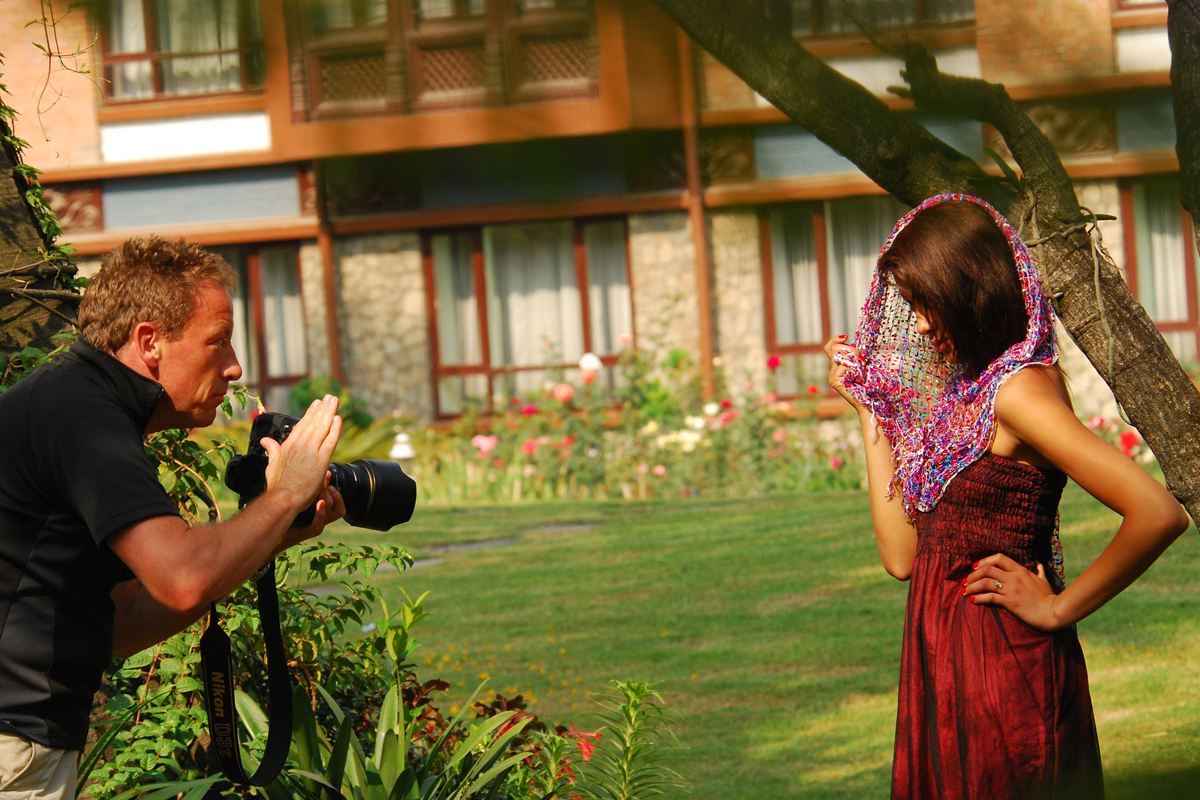
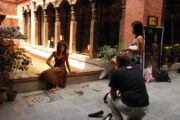
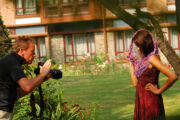
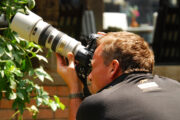
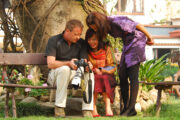
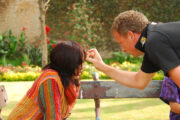
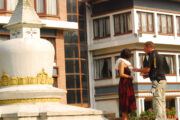
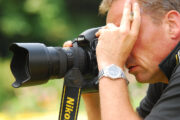
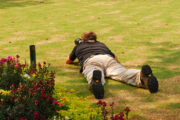
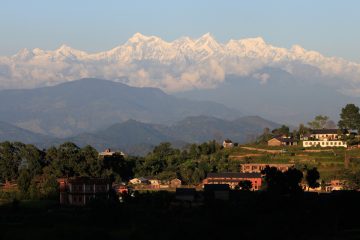
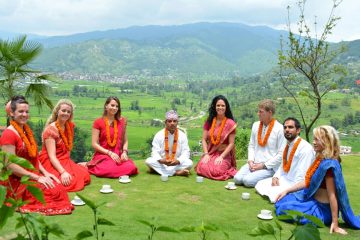
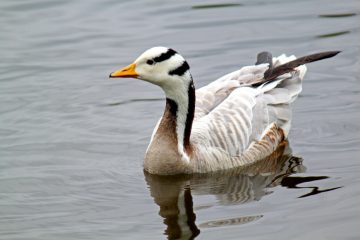
Tour Reviews
There are no reviews yet.
Leave a Review